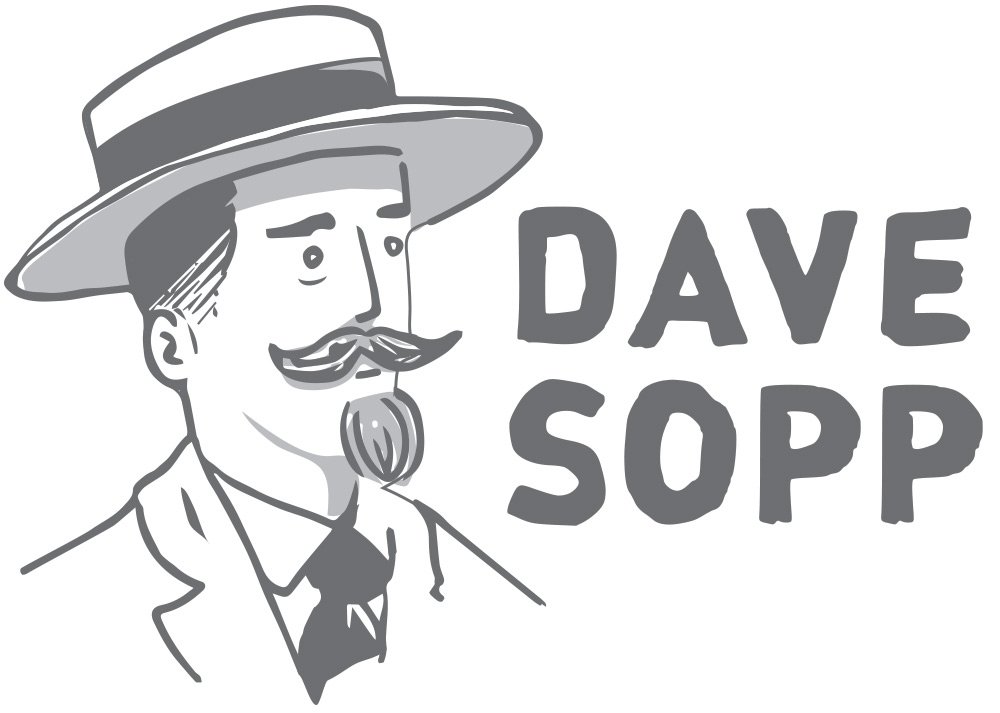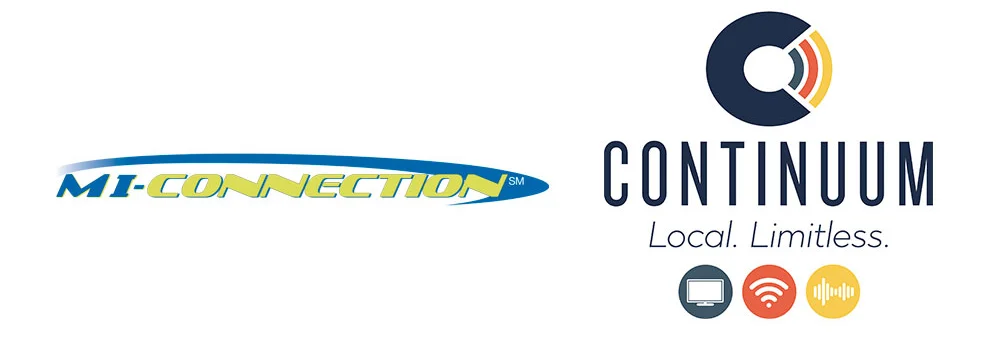Advertising > Print
I’d worked with this client for more than 8 years, and I’m still not sure where this brand originally came from. No one wants to take ownership of it, and you can guess why. It was a bear to deal with. If you read the strategy involved in this, you know all the baggage that came with it. So to be clear up front – not my logo, not my fonts, not my colors.
FINAL: The ads were clean, crisp, and clear. A total about-face from what existed before. And a HUGE step in making this communications company look like they knew what they were doing. And we didn’t have to spend a dime on photos, new logos, new colors, or nuthin’.
The first thing to do when life gives you a dog’s breakfast of a brand that you can’t change is to make the best of it. Look, it may be terrible, but it’s what they had and what people knew, so I took a deep breath and got to molding it to our purpose. I started by ejecting all the communication company visual cliches because everyone knew MI-Connection was a cable, Internet, and phone provider. Why punish the people further with stock photos of perfect families laughing at their laptops and plasma TVs? The images were a waste of time, money, and an excellent way to blend in with everything else in the recycling bin. Besides, junk like that is only useful as a last refuge when you don’t have any kind of story to tell. Think about that when you get your next Spectrum mailer.
We, on the other hand, had a really good story to tell. This is rare, so we took full advantage. Because we were the community-owned little underdog, we could say things the big out-of-town players couldn’t. And say them we did – in a way they couldn’t. We were free to launch all the broadsides we wanted at the competition because they were too big to bother fighting little ol’ us. It was so fun writing these things. And boy, did it get attention. After all, what the heck kind of communications company does ads like this!?
BEFORE: See? A little taste of what I had to work with coming on to the business.
FINAL: More ads from the launch along with some online stuff we did that was really fun. Super click-baity and led to a landing page that answered the mystery and called for a sale.
FINAL: The best part about this is saying things that only a local provider could say. Mr. Burnett was a real guy (actually my neighbor) and he (and all his friends) were blown away that his personal grievance would be publicly addressed in all the newspapers. It was so freeing to be able to do stuff like that and have it work!
I gotta admit that at first I insisted on doing the whole brand re-launch for MI-Connection with just the headline, copy and logo. No offer. Hey, I’m an art director and that’s what we do. But the CMO talked me down to reality. And she was right – it was a retail business. So I redesigned how the offer was laid out so that it played a supporting role to the brand messaging. Both are given virtually equal weight depending on what the reader is drawn to – message or price. In the end I was so happy with it, that I kept that format when we did the big rebranding later on.
I think my favorite thing about this project is that we didn’t have to do a lot of heavy lifting to stand out in a big way. In fact, we stripped everything down so far that the ads were even cheaper to produce, which let us do even more messaging. All while making a huge impact.
DAVE SOPP – Creative
Yep, that’s me. I’ve got over 20 years of marketing strategy, graphic design, advertising art direction, and illustration experience. Want to use some of it? Email me at dave@davesopp.com























































